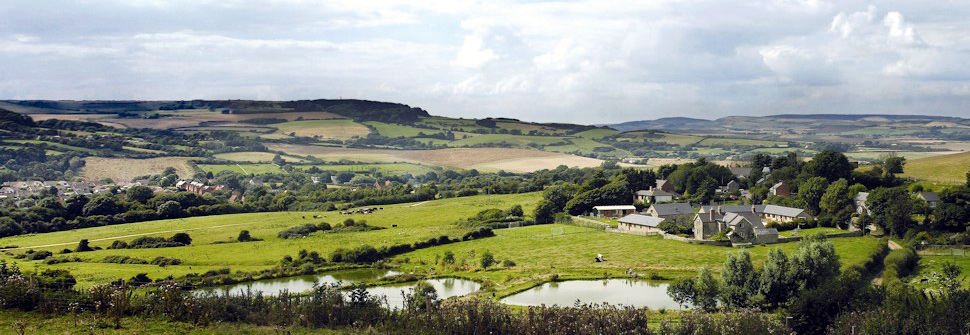Freshwater
The name of this well-known village has changed very little through the centuries, and means exactly what it says. The parish consisted of five "tuns", or farms, Norton, Sutton, Easton, Weston and Middleton; these names are still in use, except for Sutton, which has become Freshwater Bay or "Gate". Relics of prehistoric men, Roman coins, and the very curious kilns on Moon's Hill, which may possibly be Tudor brick-kilns, show a continuity of habitation over thousands of years. The district was always important in the defence of the Island, having had beacons, watch-towers, and forts at different times; some of the latter were rebuilt and used during the two World Wars.
The Church has been much altered and enlarged during its life.
The Norman inner doorway of the north porch is believed to have been the chancel arch of the first building. The tower is 15th century, and there is a brass of similar date to the memory of Adam de Compton. The little thatched Church of St. Agnes in Blackbridge Road has a venerable appearance, but in fact was only built in 1908 for the use of visitors; the stones came from an old farmhouse on Hooke Hill, and one bearing the date 1694 was used and is the cause of people misunderstanding the age of the building.
There were, naturally, a great many smugglers in Freshwater, and their descendants can recall stories of the "runs" and the tricks used to deceive the authorities. Wrecking was also a local "industry", and as late as 1918 hordes of people descended on the beach to gather the spoils from a ship which was mined off the coast; bacon, lard, oil and flour were among the cargo, and the wreck was nick- named the "Bacon and Lard Special".
The coming of Alfred, Lord Tennyson, to Farringford, brought many famous people to Freshwater, both as visitors and residents.
The poet was tormented, even in those days, by sight-seers, and built a little wooden bridge in his garden as an escape-route. His favourite walk was over the Down, and it is on the highest point of what is now called Tennyson Down that a monument stands to his memory. His son, Hallam, presented 155 acres of downland to the National Trust.
Often overlooked is another famous native of Freshwater, Robert Hooke, born in 1635. He was poor and crippled, but was the most advanced scientist of his age, and many modern machines are the result of his ideas; he was the inventor of the watch-spring.
The centre of Freshwater village is called Moa Place, an unusual name which recalls the fact that most of the building in that area was done by a New Zealander. School Green is a picture in spring and summer, when the crocuses, daffodils and roses given by local Associations provide colour and beauty in their seasons.

